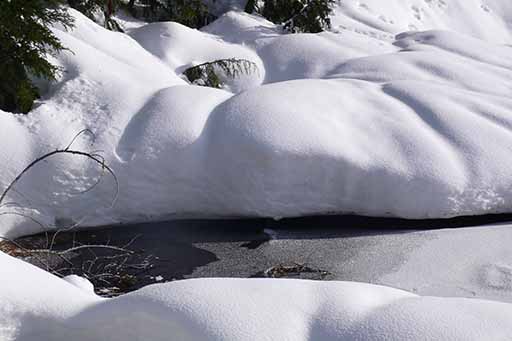Something to keep in mind…
Planting of corn, wheat, soy has been severely delayed by flooding over vast regions of the most productive farmland in the U.S.
And what has been planted is not growing well:
- There is simply too much water on the surface,
- A huge and persistent trough of the jet stream has been stuck over the central US all spring and last winter,
- Bringing associated low pressure and storms with fire-hose like precipitation,
- As well as tornadoes, galore.

~
A CLIMATE PLAN
~
This is comprehensive climate plan by Sam Carana of Arctic News. You may not agree with every point, but it is a good beginning. It is something we should all be thinking about. Lots more detail after the link, including many impressive charts…
Arctic News 6-1-19
By Sam Carana of Arctic News
Seventeen measures for immediate implementation
1. FOSSIL FUEL – Ban the use of coal and natural gas for heating, cooking and generating electricity. Stop supplying natural gas from utilities over pipelines. Ban sales of natural gas bottles. Use rationing of electricity supply from the grid to overcome bottlenecks in supply, until sufficient clean, renewable electricity can fully supply demand over the grid.
2. NUCLEAR POWER – Stop nuclear power plants from continuing to operate and start decommissioning existing plants. …
3. WOOD AND BIOFUEL – Progressively ban the use of wood and other biomass for generating power, for driving vehicles or for other energy-related purposes. Impose fees on sales of biofuel, while using revenues to fund pyrolysis of biowaste and on return of the resulting biochar to the soil locally. …
4. ROAD AND RAIL VEHICLES – Progressively electrify all trains and rail traffic, by imposing fees on trains that run on fossil fuel, while using revenues to fund conversion to or purchase of new electric trains. Progressively ban the use of vehicles with internal combustion in cities, first for one day in the week, then for two days a week, etc. …
5. AVIATION – Progressively ban aviation where flights are powered by jet fuel and other fossil fuel and biofuel. Impose fees on sales of such fuel and use revenues to fund rebates on electric airplanes that can take off and land on rooftops. …
6. SHIPPING – Progressively prohibit use of bunker fuel and other fossil fuel in shipping. …
7. URBAN WASTE – Progressively make that zero % waste leaves each city, neither by road or boat transport nor through the sky, soil or waterways. Make that waste will be processed within each city, preferably pyrolyzed with biochar and nutrients returned to soils. …
8. PLASTIC – Ensure that no plastic (or plastic parts) will be sold without permit and without fees high enough to ensure return of such items to approved collection points for safe disposal and processing. Ban single-use plastic, such as for packaging, drinking, etc.
9. DIET – Progressively ban sales of livestock products, unless supplied for medical purposes if no alternatives are available. Add fees to sales of livestock products, …
10. AGRICULTURE – Add fees on sales of nitrogen fertilizers and use revenues to fund rebates on biochar and enhanced weather in oceans.
11. WILDLIFE CONSERVATION – Ban chemical pesticides. Remove walls and fences that stop wildlife. Provide ways for wildlife to cross roads and highways. …
12. CONSTRUCTION – Add fees on sales of Portland cement, with revenues used to fund carbon-negative contruction material used locally. Fees must be high enough to progressively phase out use of Portland cement.
13. AGRICULTURE AND FORESTRY – Prohibit dumping of agricultural and other waste in landfalls, prohibit burning of waste in open fires. Prohibit cutting down large trees without permits. … Ensure that biowaste gets pyrolyzed, with the biochar returned to the soil locally. …
14. COOLING – Ban sales of new air-conditioners, fridges and freezers that work with gases. …
15. INDUSTRY – Ban the use of cleaning, solvents and other products that result in further addition of greenhouse gases.
16. UNIVERSITIES – Encourage further study in the effectiveness of measures in all above areas. Compare what happens locally with what in other areas, to ensure the most effective policy tools are used locally to facilitate the necessary transitions. …
17. FURTHER ACTION – Further lines of action will be needed to hold back the temperature rise. …

HOT AIR NEWS ROUNDUP
Wood wide web: Trees’ social networks are mapped
BBC 5-15-19
Research has shown that beneath every forest and wood there is a complex underground web of roots, fungi and bacteria helping to connect trees and plants to one another. This subterranean social network, nearly 500 million years old, has become known as the “wood wide web”. Now, an international study has produced the first global map of the “mycorrhizal fungi networks” dominating this secretive world. …
“What we find is that certain types of microorganisms live in certain parts of the world, and by understanding that we can figure out how to restore different types of ecosystems and also how the climate is changing.” Losing chunks of the wood wide web could well increase “the feedback loop of warming temperatures and carbon emissions”.
Half of all land must be kept in a natural state to protect Earth – New science says land conservation must double by 2030 to prevent dangerous warming and unravelling of ecosystems.
National Geographic 4-19-19
Countries should double their protected zones to 30 percent of the Earth’s land area, and add 20 percent more as climate stabilization areas, for a total of 50 percent of all land kept in a natural state, scientists conclude. All of this needs to be done by 2030 to have a real hope of keeping climate change under the “danger zone” target of 2.7 degrees Fahrenheit (1.5 degrees Celsius) and to prevent the world’s ecosystems from unravelling—according to an ambitious plan called the Global Deal for Nature.
Net-zero by 2050: What does it mean?
DW 5-31-19
Net-zero means a radical change across the entire economy, doing away with fossil fuels and other sources of emissions wherever possible. For the rest, every ton of CO2 we do emit must be matched by a ton that we remove from the atmosphere. … In Europe, Denmark and Norway have enshrined net-zero by 2050 in law, while Sweden’s climate legislation commits it to meeting the target by 2045. Still, all three Nordic countries either allow or don’t explicitly rule out international carbon offsetting to reach the goal. Countries including France, Spain, the United Kingdom, Germany and the Netherlands are debating similar steps.
‘Bang out of order’ — London mayor calls on PM to demand Trump take action on climate
Unearthed 6-2-19
The Mayor of London has urged the Prime Minister to challenge Donald Trump on America’s stance on climate change, saying she should tell him to “stop governing in self-interest.” … A spokesperson for Extinction Rebellion told Unearthed: “Business as usual cannot be allowed to continue. In order to address the climate and ecological emergency, we have to transform the way we approach politics. We have to restructure our entire economic system and seriously interrogate the beliefs on which it is based.
This is important and worth reading…
Plastic Is Just as Destructive to the Climate as Oil and Gas
Truthdig 5-30-19
We do not view our plastic shopping bags as part of the climate crisis — but we should. And just as the thirst for fossil fuel energy is an ugly symptom of runaway capitalism, so is plastic production and use. … Manufacturers churn out 448 million tons of plastic a year, … “plastics are simply fossil fuels in another form. Ninety-nine percent of what goes into plastics are oil, gas and, to a lesser extent, coal feed stocks.” As a result, “the processes that produce plastics begin at wellheads and at frac pads across the United States and around the world.” … Instead of ramping down plastic production and use, the fossil fuel industry is accelerating its growth. The International Energy Agency (IEA) found last year that petrochemicals, the raw materials from which everyday plastics are created, “are becoming the largest drivers of global oil demand, in front of cars, planes and trucks.”
Food, Glorious Food. Never Before Has Earth Needed More: video, part 1
Paul Beckwith 5-30-19
U.S. farmers are at wits end; livelihoods on the line, as they wait for persistent torrential rains to stop, and for fields to dry out enough for planting. They’re posting images of their soggy, submerged fields on Twitter under the hashtags #noplant19, #plant19, #corn, #wheat, #soy, #food…
Children made climate an election issue. Now we’ll target banks that fuel fossils
Climate Home News 5-29-19
We are the first generation to really be hit by the impacts of climate change and we are the last generation who can prevent an irreversible collapse of our climate. The science is clear: limiting global heating to 1.5C or below is achievable, it is a matter of justice, a matter of political will and crucially a matter of people power. …
That is why last Friday, well over a million youths around the world took to the streets again with over 1800 climate strikes in more than 130 countries, and why we took our protest to the EU banks that are fuelling the climate crisis. In Europe, we demand that our public banks stop fossil fuel funding and instead invest in the transformation of our economy we urgently need.
Feeling the Heat in Winter
Hakai 5-29-30
Alaska in March is supposed to be cold. Along the north and west coasts, the ocean should be frozen farther than the eye can see. In the state’s interior, rivers should be locked in ice so thick that they double as roads for snowmobiles and trucks. And where I live, near Anchorage in south-central Alaska, the snowpack should be deep enough to support skiing for weeks to come. But this year, a record-breaking heatwave upended norms and had us basking in comfortable—but often unsettling—warmth.
Coasts Should Plan for 6.5 Feet Sea Level Rise by 2100 as Precaution, Experts Say
Inslide Climate News 5-21-19
As coastal communities prepare for the impacts of climate change, a new report warns that ice loss from Antarctica and Greenland could cause far more sea level rise than previously thought, and it says planners should not ignore that peril. … their efforts might protect coastal regions from the most likely scenarios depicted in climate models, but that still leaves a lot of risk … “Coastal decisions by and large require long lead times
Report Shows How Koch Brothers Bankroll ‘Fox News of the Regulatory Policy World’ to Help Push Polluter-Friendly Agenda
Common Dreams 6-3-19
A report released Monday detailed how George Washington University’s ostensibly neutral Regulatory Studies Center is in fact a “key cog” in the Koch family’s fight to slash government regulations designed to protect workers and the planet. … Regulatory Studies Center (RSC) “is the Fox News of the regulatory policy world, except it still clings to the fiction that it is fair and balanced.” … The RSC’s primary output consists of written materials, including analyses of discrete regulatory proposals that are submitted to government agencies under the rubric of ‘public comments,'” Lincoln noted. “Although public comments submitted by RSC researchers carry a disclaimer that they represent the views of the individual researchers, not the RSC, they are remarkably consistent in the antiregulatory views they express.”
‘Coalition Against Death Alley’ Kicks Off 5-Day March for Environmental Justice in Louisiana’s Petrochemical Corridor
Comon Dreams 5-31-19
Activists in southern Louisiana kicked off a five-day march on Thursday that aims to bring environmental justice to Cancer Alley—the 85-mile stretch between Baton Rouge and New Orleans that’s home to poverty-stricken communities in the shadow of scores of petrochemical facilities.
On Thin Ice: March Warming in Alaska Led to Eight Deaths, Disrupted Fishing
Common Dreams 6-1-19
“March temperatures averaged 11 °C above normal,” said Lydon. “The deviation was most extreme in the Arctic where, on March 30, thermometers rose almost 22 °C above normal—to 3 °C [ed: 37.4 °F]. That still sounds cold, but it was comparatively hot.” The warmth is having a major impact on Alaskans, …”It’s hard to characterize that anomaly,” said Thoman, “it’s just pretty darn remarkable for that part of the world.”
Compostable food containers could release PFAS into environment
Phys ORG 5-29-19
much of this packaging relies on per- and polyfluoroalkyl substances (PFAS) to repel water and oil. … PFAS can leach from the containers into compost. … PFAS are widely used in manufacturing because of their flame-retardant and water- and oil-repellent properties.
What if reporters covered the climate crisis like Edward R. Murrow covered the start of World War II?
Columbia Journalism Review 5-22-19
Soon, some of you will be traveling to the ends of the earth to report on this Great Disruption. To Indonesia, where oil-palm growers and commodities companies are stripping away forests vital to carbon storage. To the Amazon, where President Bolsonaro’s government plans to open indigenous reserves to industrial exploitation, threatening the lungs of the Earth. To India, where President Modi pretends to be an environmentalist even as he embraces destructive development. To China, where President Xi’s Belt and Road initiative, the biggest transportation-infrastructure program in the history of the world, threatens disaster for earth systems. You will go to the Arctic and the Antarctic to report on melting ice, and to the shores of African cities, Pacific atolls, and poor Miami neighborhoods being swallowed by rising oceans. And to Nebraska, and Iowa, and Kansas, and Missouri, where this spring’s crop is despair as farmers and their families grieve their losses.
[VIDEO] 2 min
LEGISLATION, ELECTIONS & POLICY
Climate Trial starts today, June 4th, 2019…
Judges Give Both Sides a Grilling in Youth Climate Case Against the Government
NYT 6-4-19
Three federal judges heard arguments Tuesday about whether young people have a constitutional right to be protected from climate change. In the lively, hourlong hearing, the judges, from the Court of Appeals for the Ninth Circuit, pushed skeptically on the arguments of both sides.
Youth v. Government
Youth v. Gov 6-4-19
We filed our constitutional climate lawsuit, called Juliana v. United States, against the U.S. government in the U.S. District Court for the District of Oregon in 2015. Our complaint asserts that, through the government’s affirmative actions that cause climate change, it has violated the youngest generation’s constitutional rights to life, liberty, and property, as well as failed to protect essential public trust resources. The fossil fuel industry initially intervened in the case as defendants, joining the U.S. government in trying to have the case dismissed. In April 2016, U.S. Magistrate Judge Thomas Coffin recommended denial of both of motions to dismiss. …
Finland to be carbon neutral by 2035. One of the fastest targets ever set
Climate Home News 6-3-19
After more than a month of negotiations, five parties agreed on the goal championed by incoming Social Democrat prime minister Antti Rinne. Rinne told reporters it was time to “invest in the future”, presenting the climate strategy as part of a package with increased welfare spending. The new government said it would legislate the target and then review it in 2025.
First-of-its-kind study quantifies the effects of political lobbying on likelihood of climate policy enactment
PHYS ORG 5-29-19
All told, the total lobbying by these companies reduced the bill’s chances by 13 percentage points, from 55% to 42%, representing $60 billion (2018 dollars) in expected climate damages due to the lowered chance of enacting U.S. climate policy.
South African industry will be subject to a carbon tax from 1 June, after president Cyril Ramaphosa signed the policy into law on Sunday
Climate Home News 5-28-19
In a first for an African country, the coal-heavy economy will put a price on pollution, but campaigners say it is not high enough.
‘Exhaustive’ oil lobby threatens to derail promised tanker ban on B.C.’s north coast
The Narwhal 5-31-19
A B.C. senator lashes out as the unelected Senate stalls a long-awaited bill to formalize a 34-year oil tanker moratorium. Time is running out for Parliament to pass Bill C-48, which Coastal First Nations say is essential to protecting their economy
Go check out their chart…
Greenpeace Graded All the Presidential Candidates’ Climate Policies. They Weren’t Impressed.
Mother Jones News 6-3-19
It wasn’t a simple yes or no test. The survey asked for concrete targets for phasing out greenhouse gases, left blank spaces for candidates to write in specific policies, and even asked how candidates would go about setting up their cabinets. Greenpeace also examined each contenders climate and environment record—what policies they supported while in office, whether they took the No Fossil Fuel Money pledge, and the planks of their climate platforms
California Passes Ban on . . . Hotel Shampoo Bottles
Mother Jones 5-30-19
Those small shampoo and conditioner bottles, popular with travelers but unpopular with anti-plastics advocates, would be banned in California hotels under a bill that cleared the state Assembly on Wednesday. … If legislators were actually serious about reducing plastic waste, they’d skip the shampoo ban and go straight to supporting AB1080
FOSSIL FUELS
New prime minister could pose threat to PNG natural gas projects
World Oil 5-30-19
A critic of Papua New Guinea’s resource deals has been chosen as the country’s prime minister, a potential speed bump for multi-billion-dollar natural gas export projects led by Exxon Mobil Corp. and Total SA. … Total and Exxon reached a deal with the government in April that moved forward their efforts to double gas exports from the Pacific nation. The recent political turmoil will likely delay, but not threaten, that $13 billion project, analysts said this week after Marape’s predecessor, Peter O’Neill, announced his resignation.
Illinois Passes Tougher Rules on Toxic Coal Ash Over Risks to Health and Rivers
Inside Climate News 5-30-19
The state has more coal ash ponds leaching unsafe levels of contaminants into groundwater than any other state in the nation, a recent analysis of federally mandated water testing showed. … Lawmakers passed legislation this week that, once signed by new Democratic Gov. J.B. Pritzker, would amend the Illinois Environmental Protection Act to set stricter requirements for coal ash cleanup and to mandate public comment periods prior to closing coal ash sites.
Activists Stage Blockade to Block Work on Line 3 as Court Tosses Out Proposed Pipeline’s Approval From Regulators
Common Dreams 5-3-19
Enbridge’s Line 3 was dealt a setback by the Minnesota Court of Appeals on Monday while a trio of water protectors sustained strong resistance to the project by locking themselves to machinery to block work on the proposed oil pipeline. … 3 water protectors lock to equipment at an Enbridge worksite in MN! Great River Energy is bulldozing through the wetlands and forests to build powerlines for the Line 3 tar sands pipeline. Enbridge has no water crossing permits, but it works on.
Long and detailed article…
Leaks threaten safety — and success — of America’s top natural gas exporter
The Center for Public Integrity 5-30-19
Last year gashes up to six feet long opened up in a massive steel storage tank at Sabine Pass, releasing super-chilled LNG that quickly vaporized into a cloud of flammable gas. Federal regulators worried the tank might give way, spilling the remainder of the fuel and setting off an uncontrollable fire. It wasn’t an isolated event: Another tank was leaking gas in 14 different places. Both tanks remain out of service over a year later. … Over a dozen U.S. export projects are now in development, including a $10 billion project by ExxonMobil and Qatar Petroleum. … “Sabine has been unable to correct the long-standing safety concerns … and cannot identify the circumstances that allowed the LNG to escape containment in the first place,” … Havens described the worst-case scenario as “cascading explosions that could destroy a plant and possibly extend damages to the public beyond the facility boundary.”
WEATHER
Is Climate Change Fueling Tornadoes?
Inside Climate News 5-30-19
There is growing evidence that “a warming atmosphere, with more moisture and turbulent energy, favors increasingly large outbreaks of tornadoes, like the outbreak we’ve witnessed in the last few days,” … At ground level, the winds blow from the equator; at high elevation, from the west. The clash of those winds twists the rising bubbles of hot, moist air into destructive vortices…. Prolonged tornado outbreaks also could potentially be linked with global warming through a jet stream pattern that is becoming more frequent and that keeps extreme weather patterns locked in place
Heat, not drought, will drive lower crop yields, researchers say
PHYS.ORG 6-3-19
The researchers’ analysis revealed that soil moisture alone was the best predictor of year-to-year variations in yield across the past four decades. Harvests were particularly sensitive to drought stress in the middle portion of the growing season. … The greatest losses are forecasted for maize and spring wheat, but more resilient crops such as sorghum, which is half as sensitive to high temperature as maize, will experience less damage.
‘So much land under so much water’: extreme flooding is drowning parts of the midwest
The Guardian 6-3-19
Weeks of flooding is drowning large parts of the midwest, wrecking communities and turning farms into inland seas. On top of that, a near record number of tornadoes has whipped through the region, smashing homes and claiming nearly 40 lives so far. All of this comes after the wettest 12 months in the US since records began. …Last year, the National Climate Assessment warned of heavier rains, along with droughts and hotter summers, causing “substantial damages” to midwestern agriculture. … “I’ve seen erosion going on out in the fields,” he said. “I have seen water flowing across the fields washing soil away. It’s creating a lot of damage, more damage than I saw in 2011. I’ve seen sand in fields where I didn’t see sand in 2011. I think there’s going to be a lot of damage. A lot of farms are really badly impacted.”
Downpours of torrential rain more frequent with global warming
PHYS ORG 6-3-19
The number of extreme downpours increased steadily between 1964 and 2013—a period when global warming also intensified … Global warming can lead to increased precipitation because more heat in the atmosphere leads to more atmospheric water which, in turn, leads to rain.
India heatwave temperatures pass 50 Celsius
PHYS ORG 6-2-19
Temperatures passed 50 degrees Celsius (122 Fahrenheit) in northern India as an unrelenting heatwave triggered warnings of water shortages and heatstroke. … More than 40 percent of India faces drought this year, experts from Gandhinagar city’s Indian Institute of Technology, warned last month. … The annual monsoon—which normally brings much needed rain to South Asia—is running a week behind schedule and is only expected to hit India’s southern tip on June 6, the weather department said.
In Southeast, Alaska is seeing its first extreme drought ever recorded, climatologists say
Ancorage Daily News 5-26-19
The southernmost portion of Southeast Alaska, including Ketchikan, Prince of Wales Island, Wrangell and Metlakatla, has been in a drought for the last two years, said Rick Thoman, a climatologist at the Fairbanks-based Alaska Center for Climate Assessment and Policy. Last week, though, the drought was updated to a D3, or “extreme” drought, the second-highest category the U.S. Drought Monitor measures. It’s the first time those conditions have ever been recorded in Alaska, according to the Drought Monitor.
A warming Arctic produces weather extremes in our latitudes
PHYS ORG 5-29-19
[Researchers] have developed a climate model that can accurately depict the frequently observed winding course of the jet stream, a major air current over the Northern Hemisphere. … But these days, as observations confirm, the winds are increasingly faltering. They blow less often along a straight course parallel to the Equator; instead, they sweep across the Northern Hemisphere in massive waves. In turn, during the winter, these waves produce unusual intrusions of cold air from the Arctic into the middle latitudes … [In] late January 2019. In the summer, a weakened jet stream leads to prolonged heat waves and dry conditions
The U.S. Just Had Its Wettest 12 Months on Record
Climate Change News 6-1-19
From May 1, 2018 to April 30, 2019, the contiguous U.S. averaged 36.20 inches of precipitation ― more than half an inch higher than the previous record-setting year (April 2015 to March 2016) and the most in 124 years of modern record-keeping. Ten U.S. states had their wettest 12 months on record, with the highest precipitation rates in the Mid-Atlantic and Midwest regions.
Downpours of torrential rain more frequent with global warming
EurekAlert 6-3-19
The frequency of downpours of heavy rain–which can lead to flash floods, devastation, and outbreaks of waterborne disease–has increased across the globe in the past 50 years, research led by the Global Institute for Water Security at the University of Saskatchewan (USask) has found. … Papalexiou, who led the research, added: “This upward trend is highly unlikely to be explained by natural climatic variability. The probability of this happening is less than 0.3 per cent under the model assumptions used.”

ADAPTION AND RESILIENCE
Great Information in this article…
EU plans first satellite fleet to monitor CO2 in every country
Climate Home News 5-27-19
Europe is readying a new fleet of satellites that will monitor CO2 emissions at every point on earth, creating the first worldwide system to independently track polluters. … Right now, much of humanity’s CO2 is measured by proxy, with data supplied by countries on the fuels burned within their borders. These are known as inventories and can give a good approximation, particularly in highly developed countries. But things get muddy where governments aren’t able to track and measure their economy in detail; that is the case in a large part of the world. … Satellites currently in orbit give a sparse view of global CO2 emissions. The main technical limitation is their ‘swathe’, the width of the strip of earth they cast their eye on as they move around the planet.
Capturing Carbon’s Potential: These Companies Are Turning CO2 into Profits
State of the Planet 5-29-19
Calgary-based Clean O2 has created a carbon capture device the size of a residential air conditioner that can be attached to a natural gas boiler to capture CO2 from the flue gas. … The English company Econic has developed catalyst technologies that reduce the amount of energy needed to convert CO2 into polyols (short chain polymers), the building blocks of polyurethane. … Newlight Technologies, a California company and X Prize finalist, is using a microorganism-based biocatalyst (similar to an enzyme) to turn CO2 captured from air into a bioplastic. The biocatalyst pulls carbon out of methane or carbon dioxide from farms, water treatment plants, landfills, and energy facilities. … Montreal-based Carbicrete, an X Prize finalist, is replacing cement with ground steel slag, then curing it with CO2, which becomes a solid and binds the slag granules together into concrete. This technology eliminates the production of 2kg of CO2 per concrete block and injects 1kg of CO into each block, so it is considered carbon negative. Blue Planet in California uses CO2 from power plant flue gas to create carbonate rocks that substitute for limestone. This alternative aggregate was used in the concrete for a new terminal at the San Francisco Airport.
The most complete study of battery failure sees the light
EurekAlert 5=30-19
An international team of researchers just published in Advanced Energy Materials the widest study on what happens during battery failure, focusing on the different parts of a battery at the same time. … “Hard X-ray phase contrast nano-tomography showed us each particle at remarkable resolution across the full electrode thickness. This allowed us to track the level of damage in each of them after using the battery. … The findings from this publication offer a diagnostic method for the particles utilization and fading in batteries. “This could improve how industry designs electrodes for fast-charging batteries”
Scientists design organic cathode for high performance batteries
EurekAlert 5-30-19
Researchers … have designed a new, organic cathode material for lithium batteries. With sulfur at its core, the material is more energy-dense, cost-effective, and environmentally friendly than traditional cathode materials in lithium batteries … When designing the new cathode material, the researchers chose an organodisulfide compound that is only made up of elements like carbon, hydrogen, sulfur, and oxygen–not the heavy metals found in typical lithium batteries, which are less environmentally friendly.
Rising demand for air conditioning could make climate change even worse – But a new $1 million prize could boost climate-friendly AC technology
Yale Climate Connections 6-3-19
To jumpstart innovation, the Global Cooling Prize is offering money for the development of an affordable room AC unit that has five times less climate impact than current models. More than 1,600 engineering teams from around the world have registered for the prize. After the August 31 deadline for technical proposals, industry experts are to select 10 finalists to receive $200,000 to develop a prototype room cooling unit. The prototypes will be lab- and field-tested and the top performer will win $1 million.
Chemical blends as possible alternative refrigerants identified
Science Daily 5-29-19
More than a dozen chemical blends could serve as alternative refrigerants that won’t heat the atmosphere as much as today’s refrigerants do, or catch fire, according to a new computational study. The NIST study identified the 22 “best” nonflammable or marginally flammable blends with lower global warming potential (GWP) — a measure of how much heat a gas will trap if released into the atmosphere — than the current standard refrigerant for vehicle air conditioning (AC), called R-134a (tetrafluoroethane).
Picture heavy…
Repurposed shipping containers turned into solar-powered Cycle Hubs
inhabit 6-5-19
Bustling urban areas around the world are seeing a major increase in bicyclists cruising through their streets, some of them on very expensive electric bikes. To offer extra security for these pricey rides, savvy company Cyclehoop has come up with the an innovative solar-powered bicycle storage center made out of repurposed shipping containers
Paving sustainably – Researchers at the MIT Concrete Sustainability Hub study the many factors that influence a pavement’s environmental footprint.
MIT 5-31-19
In a paper published in the Journal of Cleaner Production, researchers at the MIT Concrete Sustainability Hub (CSHub) examine the use phase of pavements and calculate the influence of context on their environmental footprint. Their work finds that the use phase is highly context-dependent. … The MIT Concrete Sustainability Hub is a team of researchers from several departments across MIT working on concrete and infrastructure science, engineering, and economics. Its research is supported by the Portland Cement Association and the Ready Mixed Concrete Research and Education Foundation.

WILDLIFE & THE ENVIRONMENT
Great Article and needs to be read in its totality…
Why Carbon Credits For Forest Preservation May Be Worse Than Nothing
Pro Publica US 5-22-19
In case after case, I found that carbon credits hadn’t offset the amount of pollution they were supposed to, or they had brought gains that were quickly reversed or that couldn’t be accurately measured to begin with. Ultimately, the polluters got a guilt-free pass to keep emitting CO₂, but the forest preservation that was supposed to balance the ledger either never came or didn’t last. … “Offsets themselves are doing damage,” said Larry Lohmann, who has spent 20 years studying carbon credits. While we’re sitting here counting carbon and moving it around, more CO₂ keeps accumulating in the atmosphere, he said.
The story of the seabirds’ deaths likely starts at the bottom of the food chain, where warming water and climate change are changing the menu…
Mass Die-Off of Puffins Raises More Fears About Arctic’s Warming Climate
Inside Climate News 5-29-19
In recent years, the Arctic has warmed at twice the rate of the rest of the world and warmer waters have come up through the Bering Strait, wreaking havoc on the ecosystems there. This winter, during a time when the sea ice should have been expanding in the region, an area the size of Montana melted instead. … The puffins are an example of the changes: though they are common around St. Paul Island and elsewhere in Alaska, by the time of the die-off, they should have already migrated out of the area. And yet there they were, dying of starvation in droves.
Amazon deforestation up 20% in past year, environmental watchdog says
CBC 5-27-19
A non-governmental group that has monitored the Amazon rainforest for two decades said Monday that the pace of deforestation increased 20 per cent in the last nine months. Imazon said satellite imagery showed the region lost 2,169 square kilometres of forest from August through April, up from 1,807 square kilometres lost over the same period the previous year.
Researchers find seaweed helps trap carbon dioxide in sediment
EurekAlert 6-3-19
Every beachgoer can spot seaweed in the ocean or piling up on the beach, but Florida State University researchers working with colleagues in the United Kingdom have found that these slimy macroalgae play an important role in permanently removing carbon dioxide from the atmosphere. … researchers suspected that the high productivity and huge amount of seasonal biomass of annual algae would provide carbon subsidies farther offshore than typically considered, and that these subsidies would be important to benthic food webs there. That was exactly what they found. They also discovered that this was the process that leads to the burial of seaweed carbon in ocean sediments.
Colombia could lose 60% of land suitable for irrigated rice due to climate change
EurekAlert 5-29-19
Without significant global reductions in greenhouse gas emissions, Colombia will have 60 percent less land suitable for rice production by the 2050s. … Due primarily to increased temperatures and decreased rainfall – as opposed to sea-level rise, which is the driver of projected change to rice production in some Asian countries – the research shows suitable conditions will need to be found at higher elevations when low-altitude fields are too hot or dry for irrigated rice production.
Domino effect of species extinctions also damages biodiversity
Science Daily 5-28-19
The mutual dependencies of many plant species and their pollinators mean that the negative effects of climate change are exacerbated. The total number of species threatened with extinction is therefore considerably higher than predicted in previous models, researchers show.
Thinning forests, prescribed fire before drought reduced tree loss
Science Daily 5-291-9
The study, … found that thinning and prescribed fire treatments reduced the number of trees that died during the bark beetle epidemic and drought that killed more than 129 million trees across the Sierra Nevada between 2012-2016. “By thinning forests, we can reduce water stress and make forests more resilient to drought and climate change,”
Experts warn earth’s topsoil is almost gone
inhabit 6-4-19
Nearly half of all the world’s top soil has disappeared over the last 150 years, despite its critical importance to our food supply. At least 95 percent of our global food supply relies on rich topsoil … we could run out of topsoil in the next 60 years. Intensive farming is the primary cause for the loss of topsoil. Soil that is exposed to elements like wind and rain is easily lost … farming practices, like over-tilling, synthetic chemical use and lack of cover crops contributes to the degradation of soil as well.

PROTESTS • EXTINCTION REBELLION • RESISTANCE
Fridays for Future
Driven By the Continent’s Youth, Europe’s Greens Find New Strength
Yale Environment 6-4-19
In recent years, Europe’s role as a global environmental leader has been threatened by rising nationalism and populism. But spurred by young climate activists, the Green Party fared well in recent European Union elections and is now well-positioned to advance bold climate initiatives.
Greta Thunberg
Public concern over environment reaches record high in UK
The Guardian 6-5-19
Public concern about the environment has soared to record levels in the UK since the visit of Greta Thunberg to parliament and the Extinction Rebellion protests in April. … A similar surge in public anxiety has taken place in Germany, where the Green party performed particularly well in the European parliament elections last month.
Extinction Rebellion
JOIN XR USA: on their website
XR NEWSLETTERS & EVENTS: on their website
XR USA: on YOUTUBE
Extinction Rebellion plans Heathrow drone protest
BBC 6-4-19
The climate change protest group vowed to stage a one-day demonstration in June and then 10 further days in July – unless the government cancels plans for expanding the airport. Ten days of protests across central London in April saw 1,130 people arrested for various offences. Heathrow Airport said the plan was “reckless” and could “endanger lives”. Extinction Rebellion said it was in talks with members about carrying out action to close the airport on 18 June and again from 1 July for up to 10 days if the government did not cancel plans to expand the airport.

CLIMATE STUDIES
Study Uncovers Surprising Melting Patterns Beneath Antarctica’s Ross Ice Shelf
State of the Planet 5-27-19
The ROSETTA-Ice project, a three-year, multi-institutional data collection survey of Antarctic ice, has assembled an unprecedented view of the Ross Ice Shelf, its structure and how it has been changing over time. … The team faced the key challenge of how to gather data from a region the size of Spain, and where ice that is frequently more than a thousand feet thick prevents more traditional ship-based surveys of the seabed. The solution was IcePod … The team then used IcePod’s measurements of Earth’s gravity field to model the shape of the sea floor beneath the ice shelf. “We could see that the geological boundary was making the seafloor on the East Antarctic side much deeper than the West, and that affects the way the ocean water circulates under the ice shelf,” … Overall, the results indicate that models used to predict Antarctic ice loss in future climates must consider changing local conditions near the ice front, not just the large-scale changes in the circulation of warm deep water.
Deadly Japan heatwave ‘essentially impossible’ without global warming
Climate Home News 5-29-19
Japan’s heatwave in July 2018 could not have happened without climate change. That is the unequivocal conclusion of a report released last week, … The July 2018 heatwave, which killed 1,032 people, saw temperatures reach 41.1C, the highest temperature ever recorded in the country. … Scientists reached this conclusion by employing a technique known as event attribution (EA). [The method simulated] 18 climate scenarios with and without the current 1C global warming above pre-industrial levels.
Climate change is already affecting global food production — unequally
EurekAlert 5-31-19
The world’s top 10 crops — barley, cassava, maize, oil palm, rapeseed, rice, sorghum, soybean, sugarcane and wheat — supply a combined 83 percent of all calories produced on cropland. Yields have long been projected to decrease in future climate conditions. Now, new research shows climate change has already affected production of these key energy sources — and some regions and countries are faring far worse than others.
Asia’s glaciers provide buffer against drought
Science Daily 5-29-19
A new study assesses the contribution that Asia’s high mountain glaciers make to relieving water stress in the region. The study has important economic and social implications for a region that is vulnerable to drought. Climate change is causing most of the region’s glaciers to shrink.
ABRUPT PERMAFROST THAW WITH MERRITT TURETSKY
Radio Ecoshock 6-5-19
“Current models of greenhouse-gas release and climate assume that permafrost thaws gradually from the surface downwards. Deeper layers of organic matter are exposed over decades or even centuries, and some models are beginning to track these slow changes. But models are ignoring an even more troubling problem. Frozen soil doesn’t just lock up carbon — it physically holds the landscape together. Across the Arctic and Boreal regions, permafrost is collapsing suddenly as pockets of ice within it melt. Instead of a few centimeters of soil thawing each year, several meters of soil can become destabilized within days or weeks. The land can sink and be inundated by swelling lakes and wetlands.” … “One-fifth of frozen soils at high latitudes are thawing rapidly and becoming unstable, leading to landslides and floods that release carbon into the atmosphere.”
Summer extremes of 2018 linked to stalled giant waves in jet stream
PIK 4-29-19
Record breaking heatwaves and droughts in North America and Western Europe, torrential rainfalls and floods in South-East Europe and Japan – the summer of 2018 brought a series of extreme weather events that occurred almost simultaneously around the Northern Hemisphere in June and July. These extremes had something in common, a new study by an international team of climate researchers now finds: the events were connected by a newly identified pattern of the jet stream encircling the Earth. The jet stream formed a stalled wave pattern in the atmosphere which made weather conditions more persistent and thus extreme in the affected regions. The same pattern also occurred during European heat waves in 2015, 2006 and 2003, which rank among the most extreme heatwaves ever recorded. In recent years, the scientists observed a clear increase of these patterns. … There is a physical reason behind this: Land masses tend to heat up faster than the ocean areas. This leads to a more pronounced temperature contrast between land and ocean areas. “The stalling wave pattern may be favoured by this increased land ocean temperature contrast. Another relevant aspect could be the cooler than normal North Atlantic, likely a result of a slowdown of the Atlantic Meridional Overturning Circulation
Global Warnings
Paul Beckwith: “I declare a global climate change emergency to claw back up the rock face to attempt to regain system stability, or face an untenable calamity of biblical proportions.”
Kevin Hester: “There is no past analogue for the rapidity of what we are baring witness to. There has been a flood of articles … 2C is no longer attainable and that we are heading for dangerous climate change”
Magi Amma: We need to turn on a dime at mach nine!
…
Equivalencies:
• 1 gigatonne equals one billion tons
• 1 gigatonne of carbon equals 3.67 gigatonnes of CO2
• 1 part per million of atmospheric CO2 is equivalent to 7.81 gigatonnes of CO2
• 1 part per million of atmospheric carbon is equivalent to 2.13 gigatonnes of carbon





